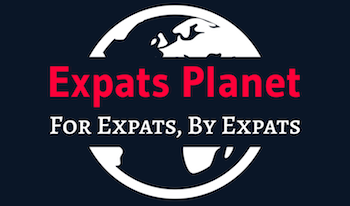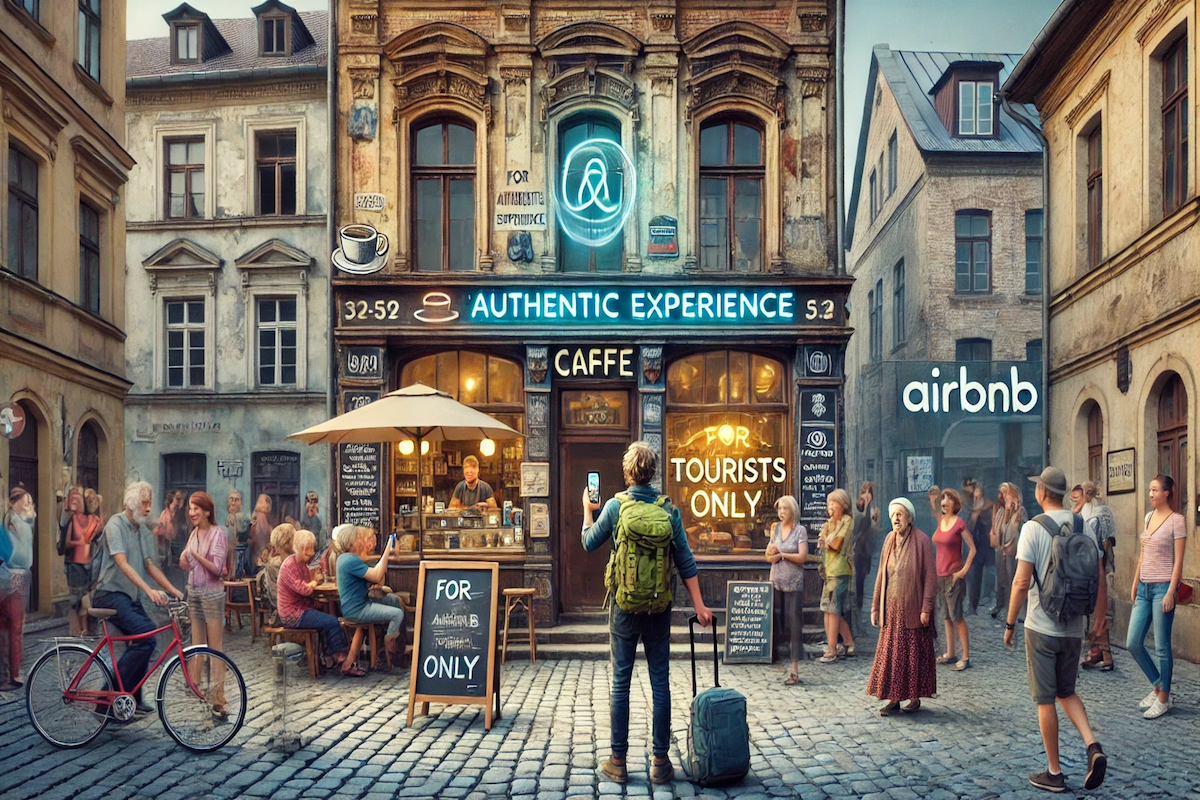Contents
Think Slow Travel Is the Cure for Over-Tourism? Think Again.
Slow travel is marketed as the solution to mass tourism, but is it quietly creating the same problems it was meant to solve?I thought I’d found it… the perfect escape from mass tourism.
Back in 2000, I stumbled into Krakow, Poland, for my CELTA course, ready to teach learn how to English as a foreign language and soak up the local atmosphere.
It was cheap, authentic, and blissfully free of selfie-stick-wielding tourists. Hell, the word selfie didn’t even exist yet.
It was close to paradise.
Then came the Airbnbs.
A few years (and a smartphone revolution) later, I returned to find my once-quaint cafés had traded handwritten menus for overpriced “authentic experiences.”
The Locals?
Pushed out to the suburbs… or out of Krakow entirely.
The only people left were other travelers just like me, unfortunately…
Slow travel… the thing we all swore was the antidote to over-tourism was looking an awful lot like its twin in disguise.
Everyone says slow travel is sustainable, ethical, and the best way to “live like a local.”
But what if it’s just mass tourism… in slow motion?
What if the charming villages we flock to eventually become the next overpriced expat/tourist bubble?
Let’s break down the hidden dangers of slow travel… and how to stop it from ruining the places we love.
The Slow Travel Movement: An Escape from Mass Tourism?
Slow travel started as a rebellion. A way to escape the overhyped, overcrowded tourist traps where you spend more time dodging selfie sticks than actually experiencing a place.
It promised something better: authenticity, sustainability and a real connection.
No rushing, no checklists, just immersion.
And at first, it worked. I’ve lived in places like Albania and Georgia where slow travel felt like stepping into a time capsule.
The pace was slower, the culture richer, and the locals actually seemed happy to have us there.
No tour buses, no souvenir shops selling plastic Eiffel Towers… just good food, deep conversations, and the illusion that we had outsmarted mass tourism.
But then came the coffee shops with oat milk lattes, the “digital nomad hubs,” and the landlords who realized that renting to travelers for a week was more profitable than renting to a local for a month.
Slow travel, it turns out, wasn’t saving these places.
It was transforming them into the very thing we were trying to escape.
Everyone raves about the benefits of slow travel.
But no one talks about its dark side.
Until now….
5 Hidden Dangers of Slow Travel
1. The “Hidden Gem” Effect… Until It’s Not
The idea of finding an *undiscovered* destination is intoxicating.
Who doesn’t want to be the person who knew about a place before it became famous?
The problem?
We all think this way. And the moment a place gets labeled a “hidden gem,” it’s game over.
Take Chiang Mai, Thailand. Once a quiet cultural escape, it’s now swarming with digital nomads, vegan cafés, and overpriced “mindfulness retreats” charging $500 to teach people how to breathe.
Or Tbilisi, Georgia… where the charm of the old city is starting to look suspiciously like Lisbon’s gentrified makeover.
How to avoid it:
- If a place is already being called the “next big thing,” you’re too late.
- Seek out destinations that actively promote sustainable tourism, not just cheap rent and fast Wi-Fi.
2. Slow Travel is Pricing Out Locals
It’s easy to believe that staying in a place for a month instead of a weekend is more ethical. And in some ways, it is.
But the reality?
The more slow travelers move in, the higher the rent climbs for the people who actually live there.
Lisbon, Barcelona, Kraków… ask a local, and they’ll tell you how Airbnbs, expat-friendly restaurants, and rising real estate prices have made it impossible for them to afford their own city.
Meanwhile, slow travelers congratulate themselves on “living like a local” while paying double what an actual local earns in a month.
How to travel ethically:
- Stay in locally-owned guesthouses instead of Airbnbs that displace residents.
- Spend your money in ways that actually support the local economy, not just businesses that cater to travelers.
3. The Airbnb Takeover… When Travelers Become the Problem
Airbnb was supposed to be about sharing… renting out an extra room, meeting cool travelers, helping homeowners earn some cash.
Instead, it’s become a real estate gold rush.
Investors buy entire buildings, kick out tenants, and turn entire neighborhoods into tourist zones.
I saw it firsthand in Krakow, Poland as I had mentioned above.
A local told me that just a few years ago, renting an apartment in the city center was affordable.
Now, landlords prioritize Airbnb guests over long-term tenants.
The result?
More travelers, fewer locals, and a city that starts to feel less like a real place and more like a slow traveler Disneyland.
How to avoid being part of the problem:
- Choose hotels, guesthouses, or family-run stays instead of Airbnb mega-rentals.
- If you must use Airbnb, rent from an actual resident, not an investor running a short-term rental empire.
People seem to forget in the whole “Ban All Airbnbs” argument that it’s regular local, working people with an extra room in their homes or even an extra apartment they owned that started the movement.
These Airbnb’s aren’t the problem.
It’s actually, the big Real Estate Investment groups buying up dozens, if not hundreds of apartments and turning them into cookie cutter Airbnbs that are ruining it for everyone, especially the locals….
4. Slow Travel’s Environmental Toll Isn’t Always Smaller
Slow travel sounds like the eco-friendly alternative to hopping on 12 flights a year. But is it?
Not if you’re flying between destinations every few months or relying on imported goods instead of supporting local businesses.
I’ve met travelers who spend half their time in Thailand or Bali and the other half in Portugal, Argentina or Brazil, jetting between continents like it’s a short Uber ride.
Meanwhile, the carbon footprint of a single long-haul flight cancels out a year’s worth of eco-conscious lifestyle choices.
How to make slow travel truly sustainable:
- Travel overland when possible: buses, trains, and ferries over flights.
- Spend money in places that reinvest in the community, not in global chains that siphon profits away.
5. When “Living Like a Local” Becomes Cultural Appropriation
There’s a fine line between cultural appreciation and cultural appropriation, and slow travelers don’t always get it right.
Learning a language, cooking with locals in a local Agriturismo (a.k.a. Agritourism), participating in traditions, that’s one thing.
Turning someone’s culture into a personal branding tool? That’s another.
I once met a fellow traveler in Mexico who had taken up weaving in a local artisan village.
Cool, right?
Until she started selling her handmade textiles online though Etsy… undercutting the very people who taught her the craft.
How to be a respectful traveler:
- Experience local culture without profiting from it.
- Buy from local artisans, not mass-produced knockoffs of local crafts.
Is Slow Travel Still the Answer? How to Do It Right
So does this mean slow travel is doomed? Not necessarily.
But if we want to do it without ruining the places we love, it’s time to travel smarter.
The Sustainable Slow Travel Checklist:
- Travel in the off-season: fewer crowds, less strain on local resources.
- Stay in places where tourism supports, not displaces, locals.
- Eat and shop local. Big chain grocery stores and Western-style cafés aren’t helping the local economy.
- Be aware of your impact. Your presence affects communities, whether you realize it or not.
Slow travel can be a force for good in the world. But only if we stop treating destinations as cheap playgrounds and start respecting them as real places with real people.
The Future of Slow Travel… Can We Save It?
Slow travel isn’t inherently bad. But like everything else, it has consequences.
And if we don’t acknowledge them, we’ll keep watching hidden gems disappear, one by one.
So here’s the question: Can slow travel stay true to its roots, or will it become just another version of mass tourism?
The answer depends on how we, as travelers, choose to explore.
Have you seen slow travel change a place for better or worse?

David Peluchette is a Premium Ghostwriter/Travel and Tech Enthusiast. When David isn’t writing he enjoys traveling, learning new languages, fitness, hiking and going on long walks (did the 550 mile Camino de Santiago, not once but twice!), cooking, eating, reading and building niche websites with WordPress.


